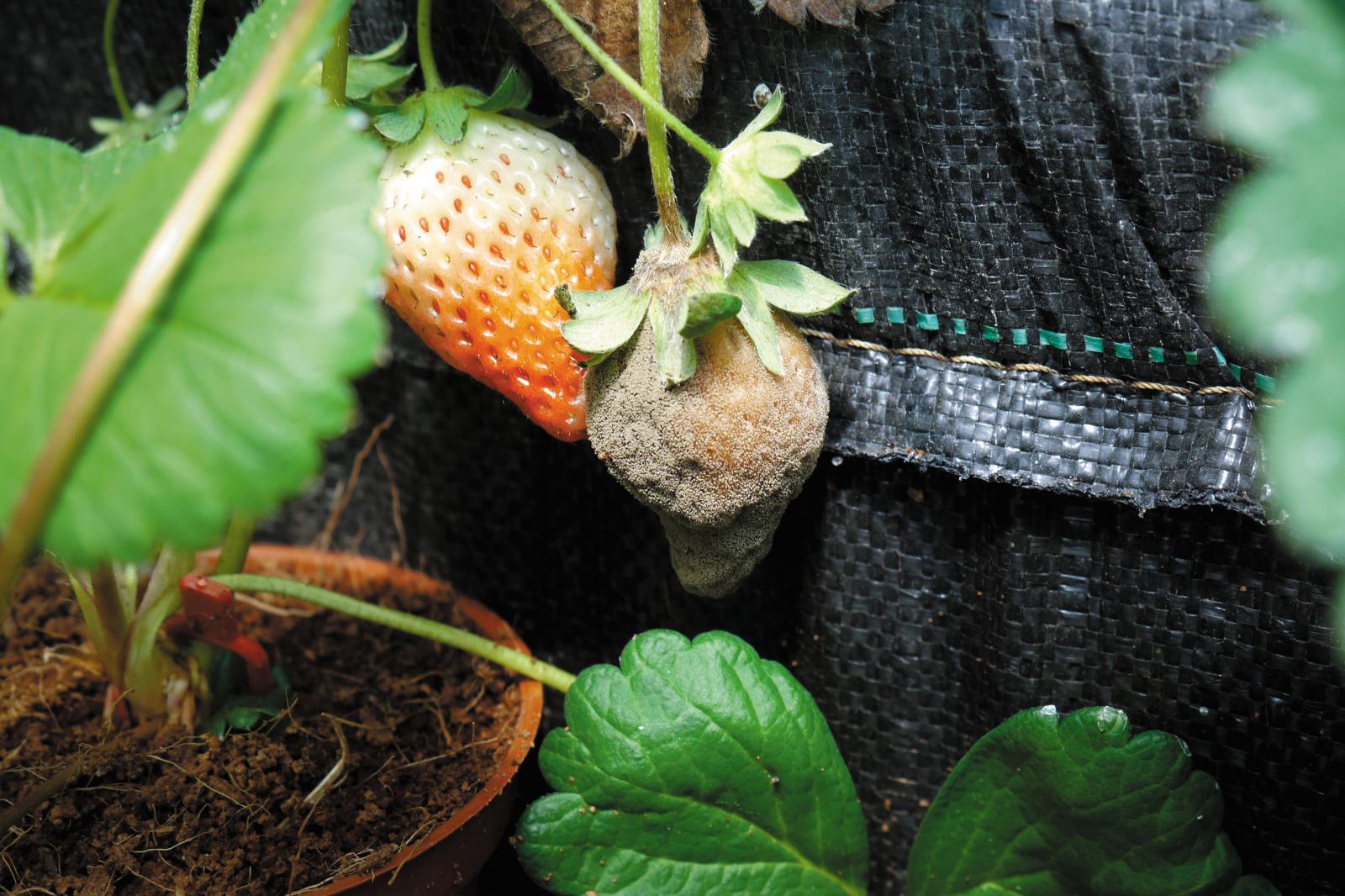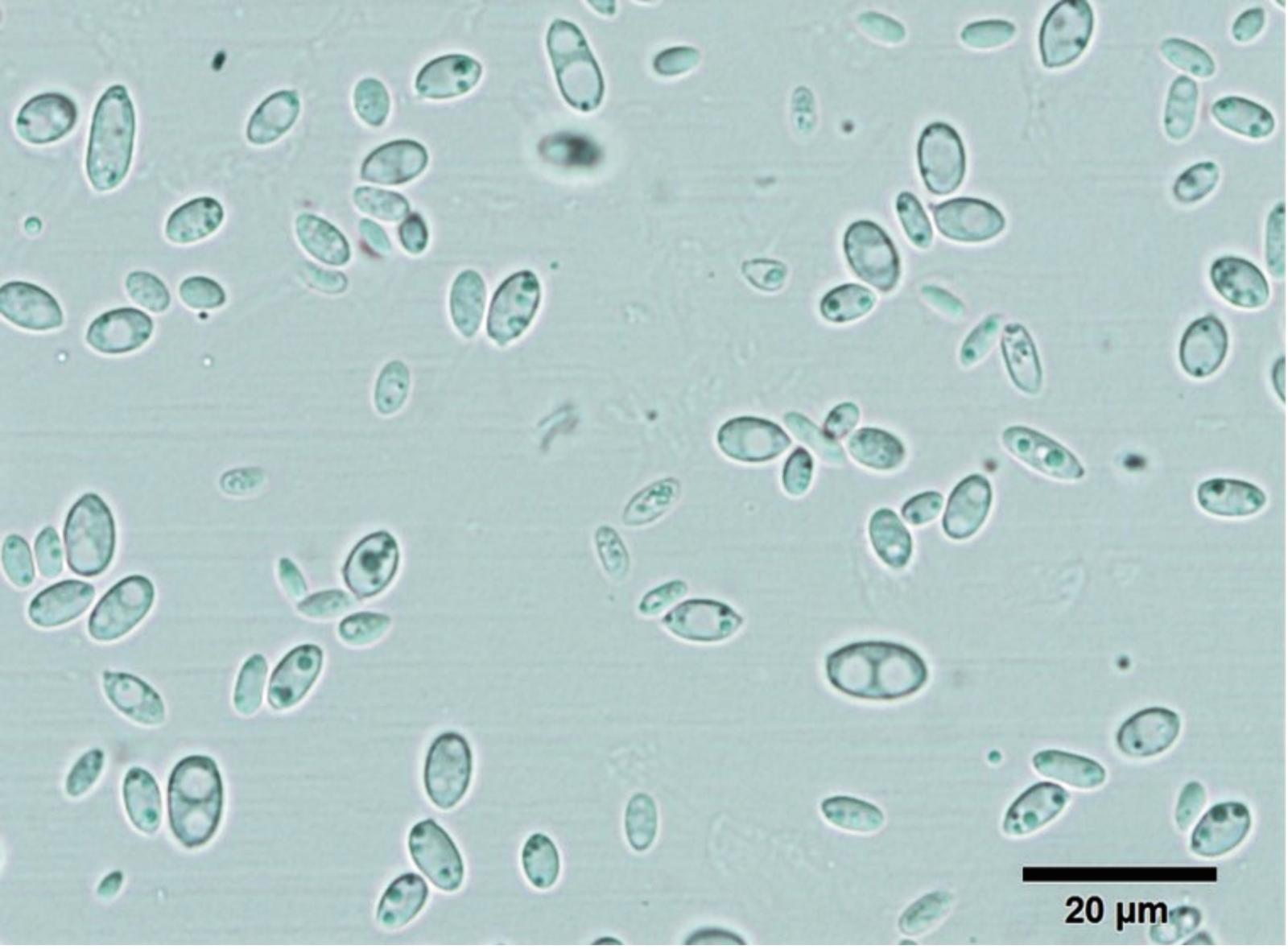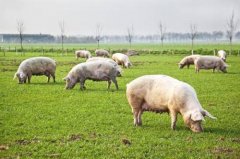Application of Biopesticide: what is yeast? The function and efficacy of Biopesticide yeast
Yeast has been used in food fermentation industry for thousands of years. By selecting and domesticating bacteria, it can be used not only to produce beer and all kinds of wine, but also to ferment bread and steamed bread. In addition, the research and development of plant disease control potential is booming in recent years.
In recent years, attention has been paid to food safety, agricultural safety and environmental safety, and the pattern of agriculture has gradually changed from habitual agriculture to safe and friendly agriculture. It is expected that the government will actively promote biological pesticides and move towards the goal of reducing chemical pesticides. Among them, the use of microorganisms to achieve control effect of biological pesticides has become an important research direction. Biological pesticides in Taiwan include developed products or registered items, such as Trichoderma, Bacillus amyloliquefaciens, Bacillus subtilis, etc., while yeast biopesticide is at the stage of research and development, and is expected to become a new force in fruit protection before and after harvesting. Improve the quality of domestic and export fruits and vegetables.
Yeast is a member of the fungal community, widely exists in the natural environment, plant leaf surface, fruit surface, soil, sea water, and even rotten wood or rotten fruit can be seen. At present, about 1500 species of yeast in have been identified and recorded by scientists. Yeast needs simple nutrients, sugars are the main carbon and energy sources, monosaccharides and oligosaccharides can be used by most yeasts, so as long as there are sugars, yeast can grow.

The study of yeast is surging, and commercialization is applied to disease control.
Many studies abroad have pointed out that yeast can be used to control postharvest diseases, such as Penicillium Penicillium causing Penicillium and Green Mold in citrus, Botrytis causing Botrytis cinerea in strawberries, Monilinia causing peach brown rot, Colletotrichum causing mango anthracnose and so on. Many kinds of yeasts have been developed and studied, such as cryptococcosis (Cryptococcus sp.), Candida albicans (Candida sp.), Metschnikowia sp., Pichia pastoris. ), among which a variety of yeast strains have been successfully developed into products.
Botrytis cinerea of strawberry caused brown spot in the early stage of the diseased fruit, and the fruit was covered with grayish brown powdery conidia in the later stage. In the later stage of strawberry growth, yeast is regularly applied to the fruit surface before harvest, which makes the yeast entangled on the fruit surface and competes with the pathogen space and nutrition to form an advantage, which is expected to reduce loss and prolong shelf life.
The first generation of yeast bio-pesticide Aspire is Candida olivaceus (Candida oleophila), which was isolated from the surface of tomato fruit by American bio-pesticide company Ecogen Inc. It is used to control Botrytis cinerea and Penicillium in citrus, pear, apple and other kernel fruits. Although this product does not exist in the market at present, it causes many researchers to develop the control potential of Candida disease. Among them, different strains of Candida olive developed yeast biopesticide Nexy, which was developed for Belgium and successfully registered in the European Union. It is used to control diseases caused by Botrytis cinerea, Penicillium or anthracnose during storage of apples, pears and bananas.
Candifruit, a biological pesticide of yeast registered in Spain, is Candida sake (Candida sake), which is used to control postharvest diseases of kernel fruits. At present, the most successful yeast biological pesticide Shemer, discovered and isolated by Samir Gedrobi (Samir Droby), a professor at the Agricultural Research Organization (ARO) of the Ministry of Agriculture of Israel, has been approved in Israel to be used in all kinds of fruits and vegetables before and after harvest, including avocado, citrus, grape, strawberry and other crops to control fungal diseases such as Botrytis cinerea and Penicillium. This product is currently obtained by the German pharmaceutical company Bayer AG and licensed to the Dutch company Colbert Biological Systems (Koppert Biological Systems).
The control effect is affected by the environment and the characteristics of the strain.
The first key step in the successful development of yeast biopesticide is to isolate and screen stable and effective strains. The process of isolation and screening of yeast affects its commercialization efficiency and success. In the study of yeast isolation abroad, the development method of "selection Strategy of microbial antagonists for controlling Postharvest Diseases of fruits and vegetables" (A selection strategy for microbial antagonist to control postharvest diseases of fruits and vegetables) by Charles L. Wilson et al., was used to isolate yeasts from the wounds on the surface of crops. This method can quickly screen yeasts with the potential to control postharvest diseases. It can also be widely isolated from plant surface, soil and sea water, such as yeast biological pesticides Aspire and Nexy. Yeast is isolated from the surface of tomato and apple fruit respectively.
In order to identify the species of yeast, the morphology of yeast is oval or oval by microscope, and the cell is larger than that of ordinary bacteria.

Yeast with control effect is often used in the field or fruit packaging yard, facing high temperature and drought field environment or low temperature storage of fruit, various environmental factors will affect its activity and control effect, such as high and low temperature, oxidation pressure, pH value, dry humidity. Therefore, it has also been studied that yeasts with high stress tolerance were isolated from extreme environments, such as Rhodotorula mongolicus (Rhodosporidium paludigenum) isolated from sea water, which has higher osmotic tolerance than yeasts isolated from the surface of common fruits, and has higher adaptability when exposed to stress, so it can be used to control pear penicillium and jujube latent infection Alternaria alternata (Alternaria alternata).
In addition, yeast with development potential must have the characteristics of genetic stability, low concentration, inhibition of fruit diseases, control of a variety of pathogens, easy culture, environment-friendly, no pathogenicity to plants, no harm to human body and so on. In the process of commercialization of yeast bio-pesticides, we will face the tests of yeast mass production fermentation and the development of pesticide formulations, in which the fermentation cost, fermentation time should not be too long and the stability of bacteria quantity should be improved in the process of mass production fermentation. the development of pesticide formula should consider shelf life, preservation mode, yeast activity maintenance and simple application method, which can improve market acceptance.
Six antagonistic mechanisms to protect crop wounds
Yeast is successfully used to control diseases, but there is interaction among yeast, pathogen and host plant. Under the action of yeast, the interaction can be driven to achieve the effect of pathogen control. The main mechanism of yeast is listed as follows. One is that the competition between nutrition and space is regarded as the first advantage of yeast in biological control. Through nutritional competition with pathogens, such as sugars, nitrogen, oxygen, etc., yeasts can make full use of these growth elements than pathogens, and because of their rapid growth, priority is also given to attaching and protecting crop surface wounds.
The second is the production of bacteriostatic substances, yeast can produce diffusive or volatile antibacterial compounds, such as toxins, antibiotic metabolites. Saccharomyces cerevisiae (Aureobasidium pullulans) can produce antimicrobial substance Aureobasidin A, which affects the biosynthesis and metabolic function of pathogenic bacteria. This kind of yeast has also been pointed out to produce volatile organic compounds with antagonistic pathogens.
There are often brown spots in guava fruit, and the pulp may be softened, flooded, or browned, so yeast can be used to control it.
The third is the parasitism and production of hydrolytic enzymes, the phenomenon of yeast parasitizing pathogenic bacteria, which can cause the structure of pathogenic fungi to be destroyed or decomposed directly, and it can also produce hydrolytic enzymes such as glucanase, chitinase and protease, which can destroy the cell wall of pathogenic fungi directly or indirectly. For example, Saccharomyces cerevisiae Pichia guilliermondii can produce glucanase to destroy the hyphae of Botrytis cinerea.
The fourth is iron embedding ability, fungal growth and pathogenicity need iron, some yeasts have iron embedding ability, compete with pathogens for iron, thus producing the effect of antagonistic pathogens. Saccharomyces cerevisiae has this ability, which can inhibit the mycelial growth and spore germination of Botrytis cinerea and Penicillium. The fifth is the formation of biofilm, yeast can adhere, entangle and reproduce on the fruit surface or inside the wound, and produce proteins and polysaccharides on the matrix to form a biofilm to effectively antagonize pathogenic fungi. The sixth is to induce disease resistance in plants. Before pathogens infect plants, they can also interact with plant tissues or wounds, thus inducing systemic disease resistance in plants and inhibiting pathogens infecting plants.
Taking nutritional competition as the main mechanism of resistance to pathogens
At present, the mechanism of various yeasts in the control of pathogens is not fully understood, and further clarification will contribute to the development of disease control strategies. The registered application objects, action mechanism and application methods of commercial yeast biological pesticides are mostly aimed at the prevention and control of postharvest diseases, and nutrition and spatial competition are the main mechanism.
Taking yeast biological pesticide Nexy as an example, the control objects of Botrytis cinerea, Penicillium mildew and Banana anthracnose of apple and pear were applied after harvest and before storage, soaking for 30 seconds to 2 minutes or continuous leaching for at least 30 seconds. The main antagonistic mechanism of pathogen is its nutritional competition with pathogens, and priority entanglement on the fruit surface, which has more ability to produce glucanase to decompose the cell wall of pathogenic fungi.
Guava scab disease may occur almost all year round. Although bagging is carried out in the small fruit stage, the pathogen may still pass through the branches into the bag to cause the disease. In addition to maintaining good field hygiene, yeast is applied before bagging to create a good microbial phase on the fruit in order to reduce the incidence of the disease.
Yeast biological pesticide Shemer is a water dispersible granule form, which is registered for a wide range of control objects, including citrus Penicillium, strawberry Botrytis cinerea, grape Botrytis cinerea, sweet potato soft rot, etc., which can be sprayed or impregnated before or after harvest. The main mechanism is nutritional competition. In vacuum, the shelf life of Shemer can be as long as 1 year. On the other hand, yeast biological pesticide Boniprotect was developed with special yeast-like bacteria (Aureobasidium pullulans). The main mechanism of action was nutritional competition, which was also a water dispersible granule form, which was registered in Germany to control Penicillium and Botrytis cinerea of apple and pear. It was mainly applied 2-3 weeks before fruit harvest, once every 7 days and 3 times continuously, and it could also be applied during harvest. It can also be mixed with a few fungicides and insecticides and can be stored for 10 months at 25 ℃ and 18 months at 8 ℃. The same synonymous product Botector is registered in Australia to control grape, strawberry and tomato gray mold.
Rapid growth and proliferation and wide environmental adaptability
There have been many successful cases in the development and commercialization of yeast biopesticide in foreign countries, but there are still many obstacles in the process of commercialization. At present, most small companies invest in development, and it is necessary to overcome the difficulties of low product profits, lack of funds, and difficulties in establishing a market. in addition, biological pesticides have to be registered with the competent authorities before commercialization, such as the US National Environmental Protection Agency (EPA). The process takes a lot of time and becomes an obstacle to commercialization. The challenge faced in the consumer market is that the control effect of biological pesticides is not as fast and effective as chemical pesticides, and yeast is mainly limited by postharvest disease control, which leads to the limitation of yeast bio-pesticide promotion.
Yeast still plays an indispensable role in disease control, not only can it adapt to the micro-environment of fruits and vegetables, including high sugar concentration, high osmotic pressure, low pH and high humidity, but also can grow and multiply rapidly and have simple nutritional requirements. It can quickly establish ethnic groups on the surface of fruits and vegetables, which is the winner of nutrition and spatial competition, and then achieve the effect of protecting plants, but also because of its wide environmental adaptability. It has also become an advantage in the development of biological pesticides.
Grape late rot disease latent infection in the fruit, to the fruit color conversion period to show symptoms, produce black spots, to the middle of the disease spot depression, and produce orange conidia. Saccharomyces cerevisiae was regularly applied from the middle of growth to bagging, the yeast entangled on the fruit surface to achieve the protective effect, in order to reduce the proportion of anthracnose infection.
In the process of domestic and export sales of fruits and vegetables in Taiwan, farmers often suffer losses due to latent infection of pathogens before harvest or diseases caused by wounds on the surface of fruits and vegetables after harvest. If yeast can be combined with pre-harvest management and postharvest treatment technology to form a microbial protective layer on the surface of fruits and vegetables, the loss caused by diseases can be greatly reduced.
The agricultural improvement farm in Taichung District of the Council of Agriculture has been effective in yeast screening and control effect testing. yeasts were isolated from the wounds on the surface of leaves and fruits. The purified cultured yeasts were tested in the culture medium, and the pathogens were placed in the center of the culture medium. A yeast was drawn at each end of the pathogen, and the inhibition effect of yeast on the growth of pathogenic bacteria was observed. Its inhibitory effect on many pathogens causing fruit rot, such as guava scab, anthracnose and grape late rot, was tested, and the yeast with excellent antagonistic effect was selected for follow-up fruit control experiment. at present, a screening platform for antagonistic yeast has been initially established. In the future, we will aim at guava scab, anthracnose, grape late rot, strawberry gray mold and so on, in order to introduce yeast biopesticide into the field and apply it to pre-harvest management and post-harvest treatment technology.
- Prev

How do people prevent African swine fever? How to prevent African swine fever and live pig transport vehicles have contact?
African swine fever prevention, live pig transport vehicles are not listed as a black hole, then what should we do? Let's get to know each other. How is defense better? China's African swine fever epidemic is opaque, Taiwan epidemic prevention is all tense. In the face of these days in Taiwan
- Next

Bamboo house: a simple house made of bamboo. Is a house made of bamboo a home?
What is home? How to save it? The green architect will certainly give you an answer other than turning on the air-conditioner. Architects are all realizing the dream of starting a family for others, and in view of the promotion of sustainable architecture, he also said solemnly, "Home should not just be copied by architects."
Related
- A one-day flower show brings 130 million yuan in orders! Nanhai, this Phalaenopsis exhibition is amazing
- What do the flower language and meaning of Lutheran tree mean? Precautions for planting Lutheran tree
- Encounter Chaoshan Kongfu tea, not without this cup of Phoenix single clump
- The durian market in Vietnam and Thailand is flooded. The price of imported durian has plummeted by 30-40% in a month.
- Shanghai solved the problem of local vegetable supply by planting 80,000 mu of green leafy vegetables.
- Wageningen University has become the best agricultural university in the world for the seventh time in a row.
- The strongest export season of South African grapes is full of challenges, with exports to Russia falling sharply by 21%.
- Sri Lanka is on the verge of bankruptcy, "Tea for debt" Organic Agriculture Revolution aggravates the Food crisis?
- Turning waste into earthworm manure and worm manure into organic fertilizer-A new choice for auxiliary farming
- Organic rice growers shoulder the responsibility of nurturing agricultural talents! Yinchuan Sustainable Farm with Organic Life Camp

